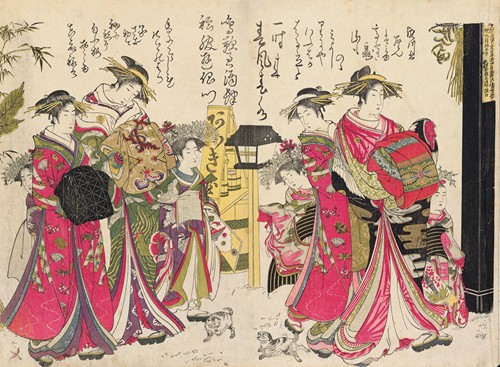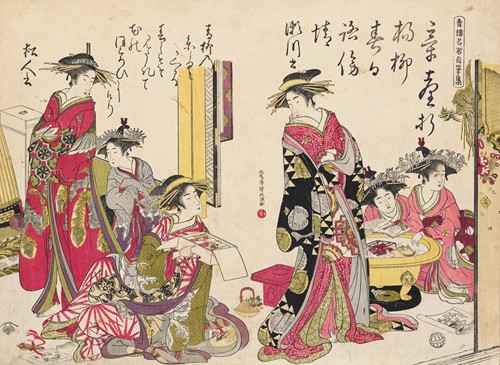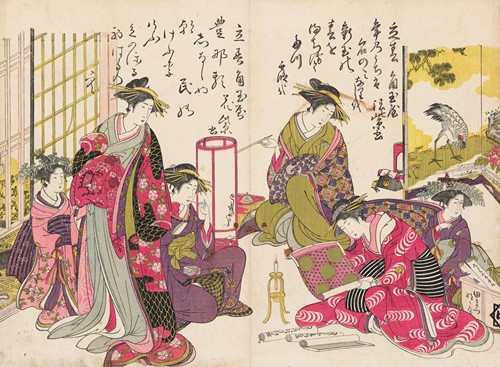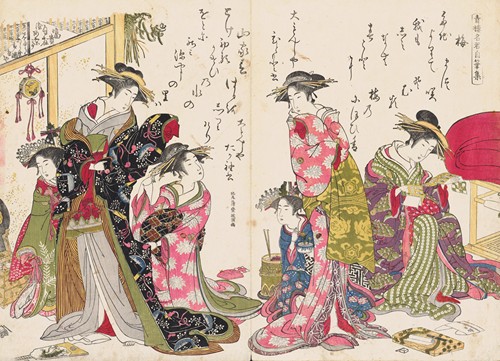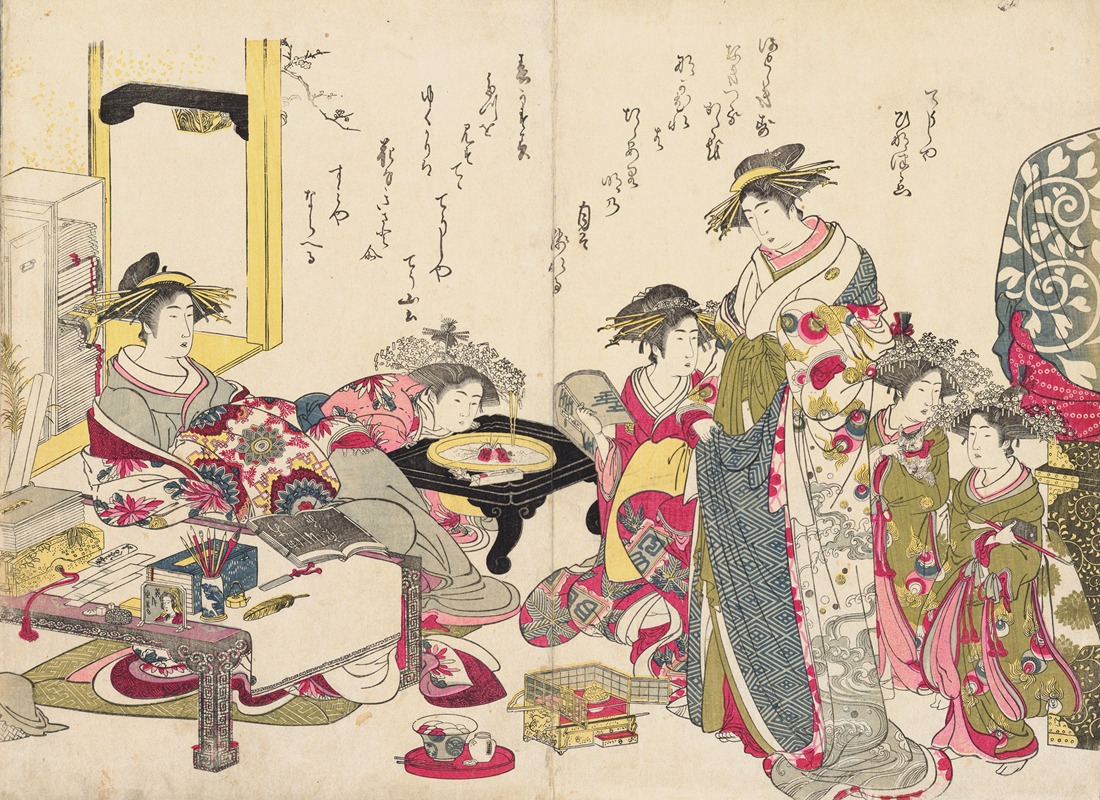
Santō Kyōden was a Japanese poet, writer and artist in the Edo period. His real name was Iwase Samuru (岩瀬 醒), and he was also known popularly as Kyōya Denzō (京屋伝蔵, kyōya denzō). He is the brother of Santō Kyōzan.
Santō Kyōden was born in Fukagawa in Edo (modern Tokyo). The Iwase family into which he was born were pawnbrokers in a lumberyard. He studied ukiyo-e under master Kitao Shigemasa (北尾 重政), and began illustrating kibyōshi under the pseudonym of Kitao Masanobu (北尾 政寅). He soon started writing these novels also under the name of Santō Kyōden; several novels are labeled as written by Santō Kyōden and illustrated by Kitao Masanobu. He wrote kibyōshi and sharebon in great numbers, and became a popular writer. During this time he married twice, both his wives being licensed workers of Yoshiwara, the red-light district of Edo.
During the Kansei Reforms, "[...] military and civil arts were encouraged, and the decadent writings of gesaku authors were condemned." In 1791, Kyōden published three sharebon: Shikake Bunko (仕懸文庫), Nishiki no Ura (錦之裏), and Shōgi Kinuburui (娼妓絹籭). This incurred the anger of the stricter government and he was chained in manacles to his house for fifty days as punishment.
Kyōden then broke off all ties with sharebon and turned to writing yomihon. Kyokutei Bakin joined with Kyōden to write gesaku jointly, and independently Kyōden also wrote essentially historical texts on the manners and customs of the Edo period. Kyōden was an acute observer of life in the Edo period. While at ease with exaggeration, comedy and linguistic fun, his writing was primarily realistic.
Fiction writers prior to Kyōden generally wrote fiction as a hobby without any expectations of payment. Kyōden was one of the pioneers in turning this hobby into a livable profession.

